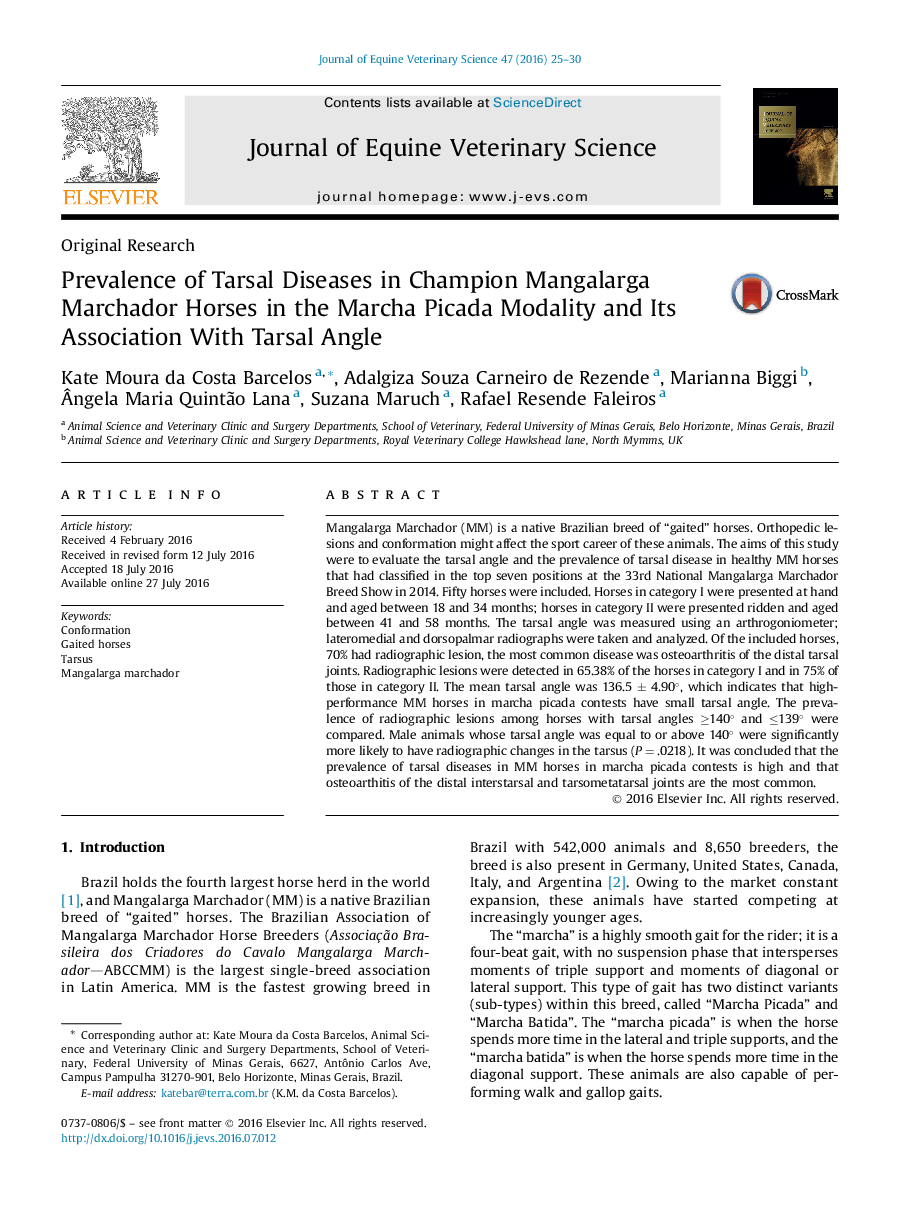| کد مقاله | کد نشریه | سال انتشار | مقاله انگلیسی | نسخه تمام متن |
|---|---|---|---|---|
| 2394316 | 1551553 | 2016 | 6 صفحه PDF | دانلود رایگان |
• High-performance Mangalarga Marchador horses have a small tarsal angle, with a mean of 136.5 ± 4.90.
• 70% of horses included in the study had some diseases of the tarsus; the most common was osteoarthritis of the distal intertarsal and/or tarsometatarsal joints seen in 94.3% of the horses.
• There was a significant association between male horses with tarsal angle ≥140° and presence of diseases within the tarsus.
Mangalarga Marchador (MM) is a native Brazilian breed of “gaited” horses. Orthopedic lesions and conformation might affect the sport career of these animals. The aims of this study were to evaluate the tarsal angle and the prevalence of tarsal disease in healthy MM horses that had classified in the top seven positions at the 33rd National Mangalarga Marchador Breed Show in 2014. Fifty horses were included. Horses in category I were presented at hand and aged between 18 and 34 months; horses in category II were presented ridden and aged between 41 and 58 months. The tarsal angle was measured using an arthrogoniometer; lateromedial and dorsopalmar radiographs were taken and analyzed. Of the included horses, 70% had radiographic lesion, the most common disease was osteoarthritis of the distal tarsal joints. Radiographic lesions were detected in 65.38% of the horses in category I and in 75% of those in category II. The mean tarsal angle was 136.5 ± 4.90°, which indicates that high-performance MM horses in marcha picada contests have small tarsal angle. The prevalence of radiographic lesions among horses with tarsal angles ≥140° and ≤139° were compared. Male animals whose tarsal angle was equal to or above 140° were significantly more likely to have radiographic changes in the tarsus (P = .0218). It was concluded that the prevalence of tarsal diseases in MM horses in marcha picada contests is high and that osteoarthitis of the distal interstarsal and tarsometatarsal joints are the most common.
Journal: Journal of Equine Veterinary Science - Volume 47, December 2016, Pages 25–30
